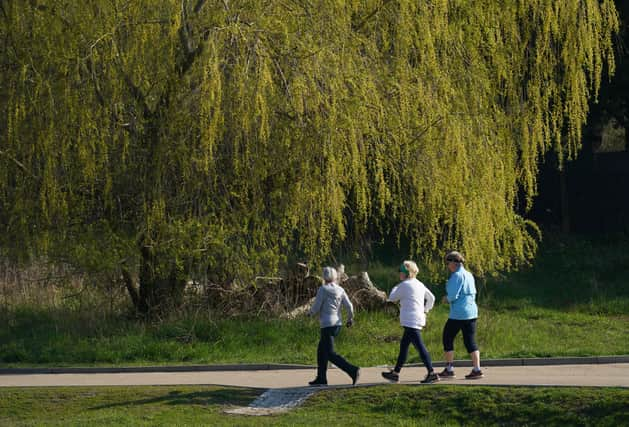Light exercise: researchers recommend three hours a day to reduce high cholesterol from sedentary childhood


Children who are physically inactive may have a higher risk of heart attack or stroke later in life, but a new study suggests this can be reversed with light exercise.
Increased sedentary time in childhood can raise cholesterol levels by two thirds as an adult, leading to heart problems and even premature death, experts say, but light physical activity such as walking and household chores may completely reverse the risks.
Advertisement
Hide AdAdvertisement
Hide AdHigh cholesterol during childhood has been associated with early signs of heart disease when individuals reach adulthood and an increased risk of premature cardiovascular death in mid-life. This kind of activity may be more effective than moderate-to-vigorous physical activity.
The researchers indicate that international recommendations on children’s activity should take their findings into consideration. Dr Andrew Agbaje from the University of Exeter led the study and said: “These findings emphasise the incredible health importance of light physical activity and shows it could be the key to preventing elevated cholesterol and dyslipidaemia from early life.
“We have evidence that light physical activity is considerably more effective than moderate-to-vigorous physical activity in this regard, and therefore it’s perhaps time the World Health Organisation (WHO) updated their guidelines on childhood exercise, and public health experts, paediatricians, and health policymakers encouraged more participation in light physical activity from childhood.”
He added: “Our research suggests light physical activity may be an unsung hero and it is about time the world replaced the mantra of ‘an average of 60 minutes a day of moderate-to-vigorous physical activity’ with ‘at least 3 hours a day of light physical activity’. Light physical activity appears to be the antidote to the catastrophic effect of sedentary time in the young population.”
Advertisement
Hide AdAdvertisement
Hide AdThe WHO currently recommends children and adolescents should build up an average 60 minutes of moderate-to-vigorous physical activity a day and reduce sedentary time, and it has limited guidelines for light physical activity.
However, the new study, published in the Journal of Clinical Endocrinology and Metabolism, found light physical activity – which also includes slow dancing, swimming, or cycling – is up to five times more effective than moderate-to-vigorous physical activity at promoting healthy hearts and lowering inflammation in the young population.
During the study, which looked at 792 children, the researchers used a device similar to a pedometer to measure sedentary time, light physical activity, and moderate-to-vigorous physical activity at ages 11, 15, and 24 years.
Cholesterol levels were repeatedly measured at ages 15, 17, and 24 years, and the children also had repeated assessment of total body fat mass and muscle mass, as well as various blood tests, with smoking status, socio-economic status, and family history of cardiovascular disease.
Advertisement
Hide AdAdvertisement
Hide AdSedentary time increased from around six hours a day to nine hours a day, over the course of the 13-year follow-up.
Light physical activity decreased from six hours a day to three hours a day while moderate-to-vigorous physical activity was relatively stable at around 50 minutes a day from childhood until young adulthood.
The average increase in total cholesterol was 0.69 millimoles per litre (mmol/l).
The study found that an average of four-and-a-half hours a day of light physical activity from childhood through young adulthood decreased total cholesterol.
Advertisement
Hide AdAdvertisement
Hide AdApproximately 50 minutes a day of moderate-to-vigorous physical activity from childhood was also associated with slightly reduced total cholesterol (-0.05 mmol/L), but total body fat mass decreased the effect of moderate-to-vigorous physical activity on total cholesterol by up to 48%.
Importantly, the researchers said, the increase in fat mass neutralised the small effect of moderate-to-vigorous physical activity on total cholesterol.
Dr Agbaje said: “Our study shows increased sedentary time in childhood may contribute to two thirds of the total increase in a person’s cholesterol levels before their mid-twenties. This suggests childhood sedentariness may be a major risk factor for elevated cholesterol and subsequent premature heart attack or stroke when individuals reach their mid-forties.”
The study was conducted in collaboration between the University of Exeter, University of Eastern Finland, and University of Bristol, using data from the University of Bristol study Children of the 90s (also known as the Avon Longitudinal Study of Parents and Children).
Comment Guidelines
National World encourages reader discussion on our stories. User feedback, insights and back-and-forth exchanges add a rich layer of context to reporting. Please review our Community Guidelines before commenting.
